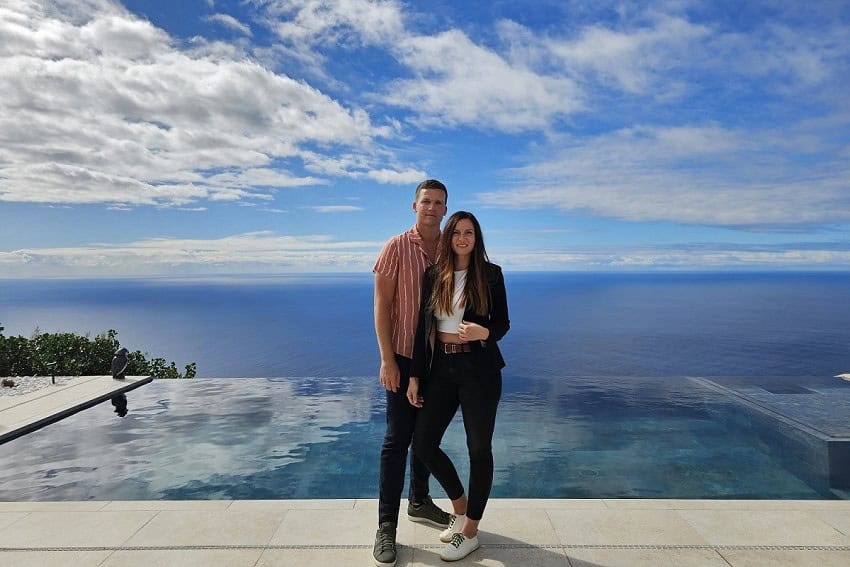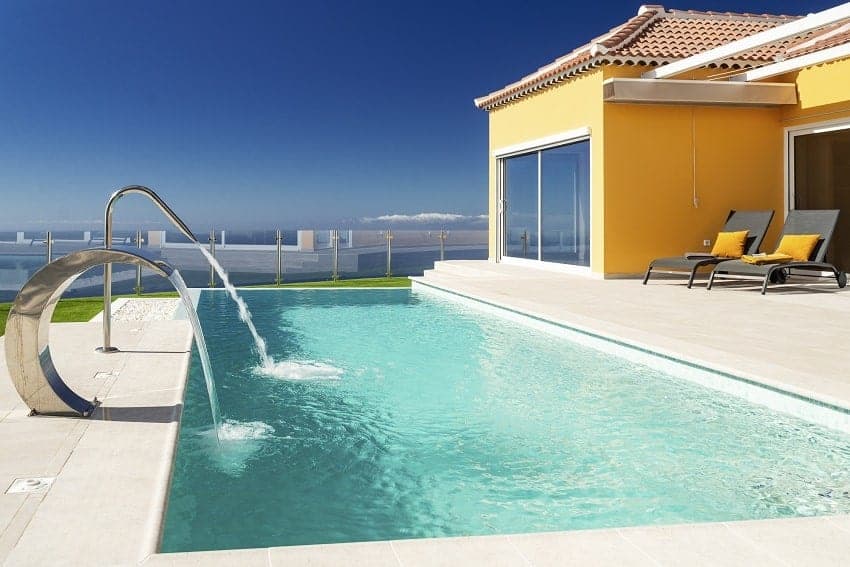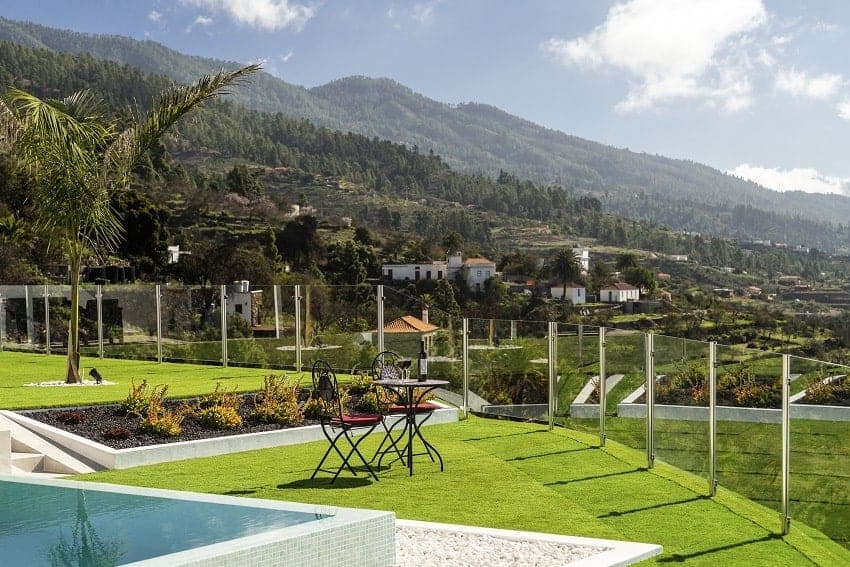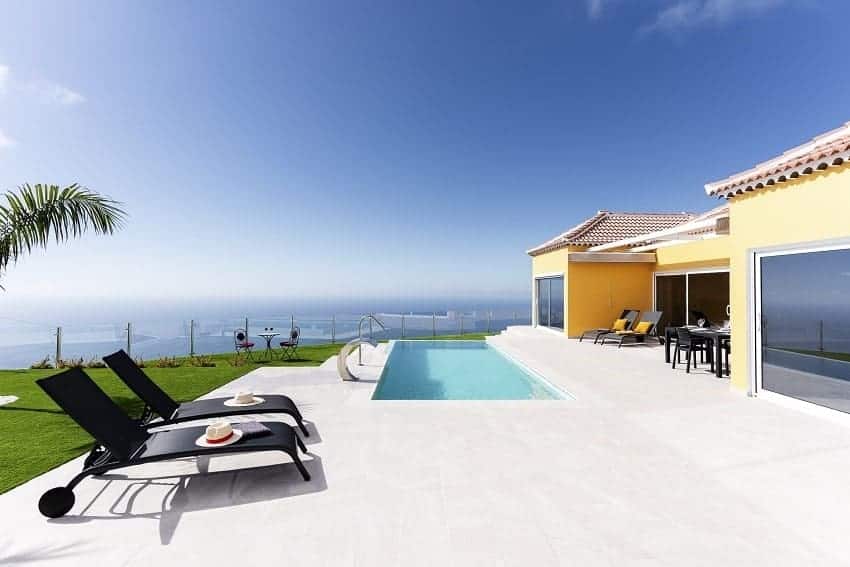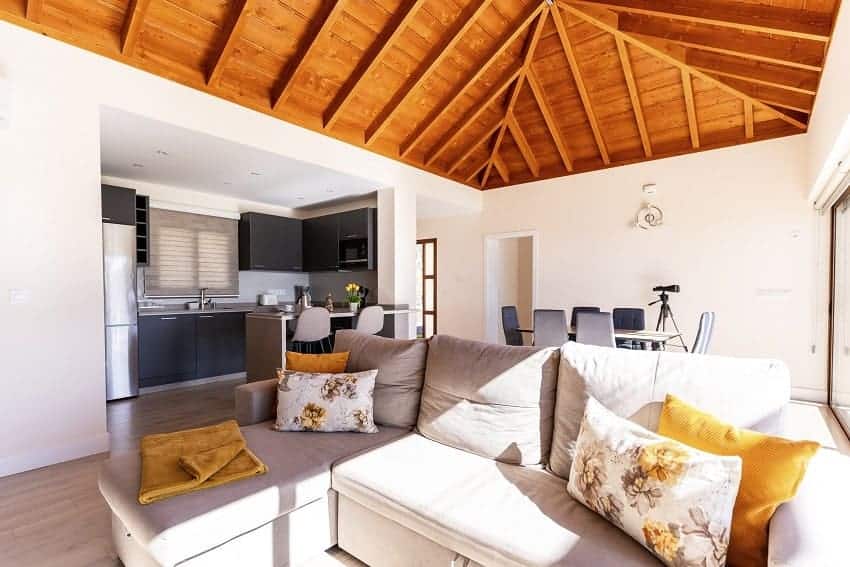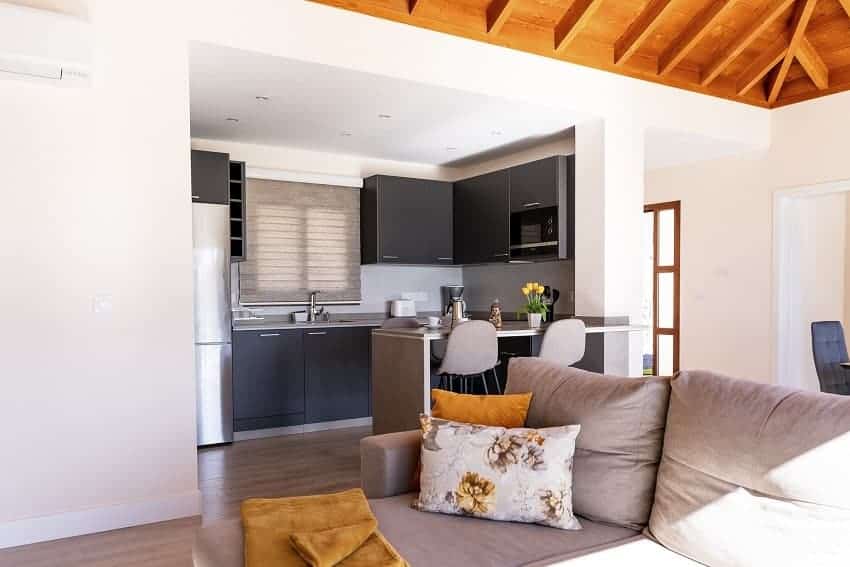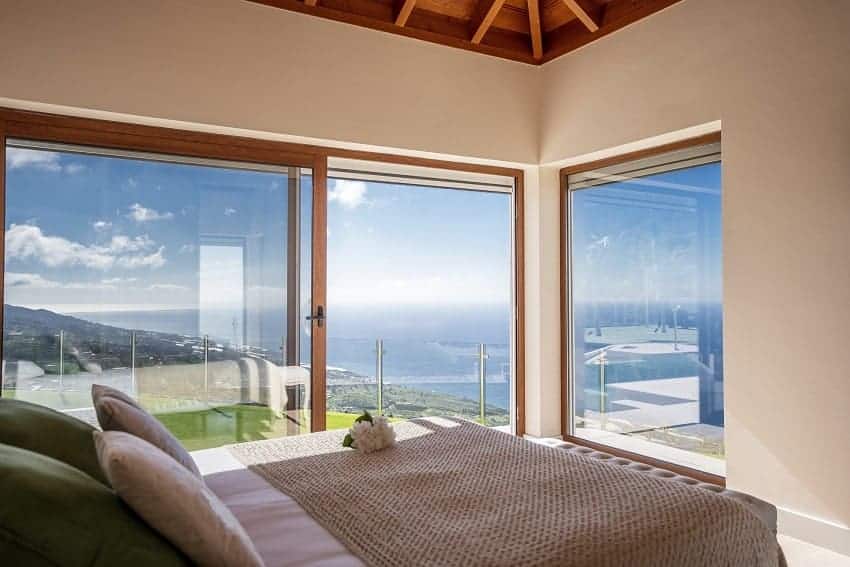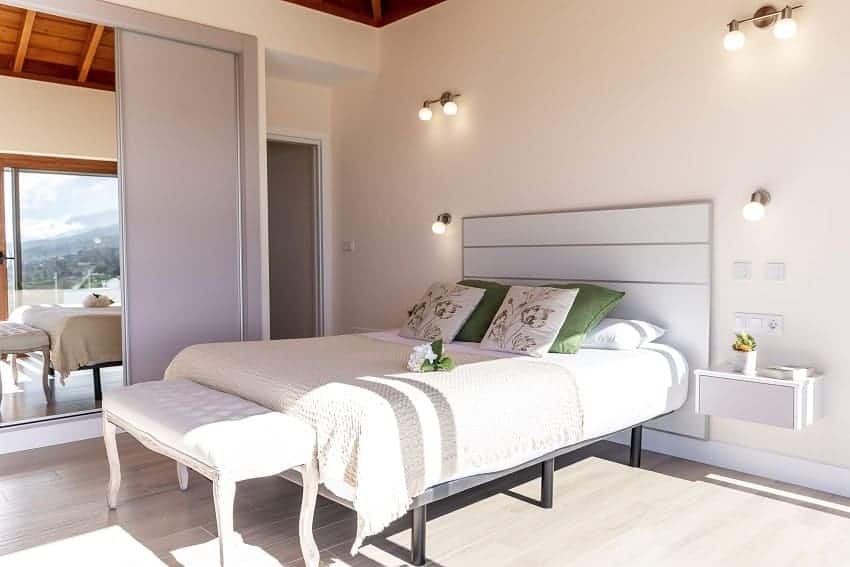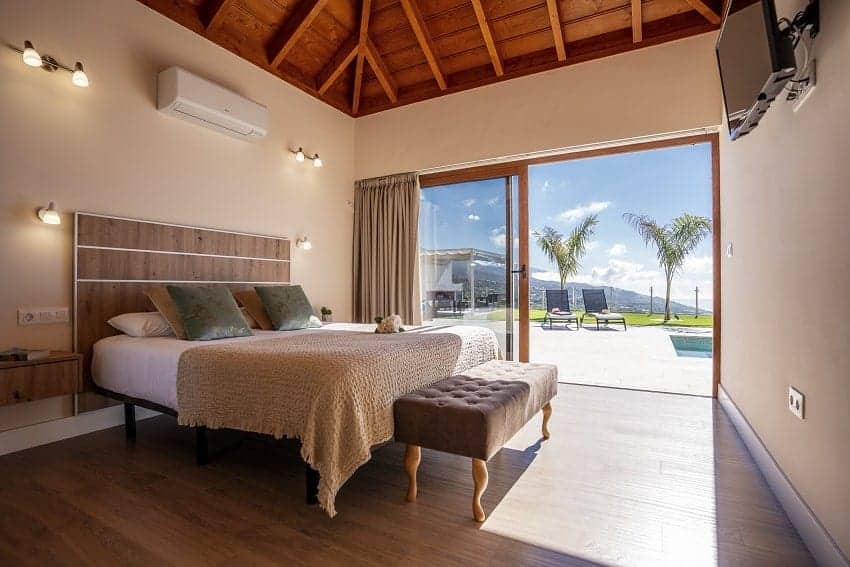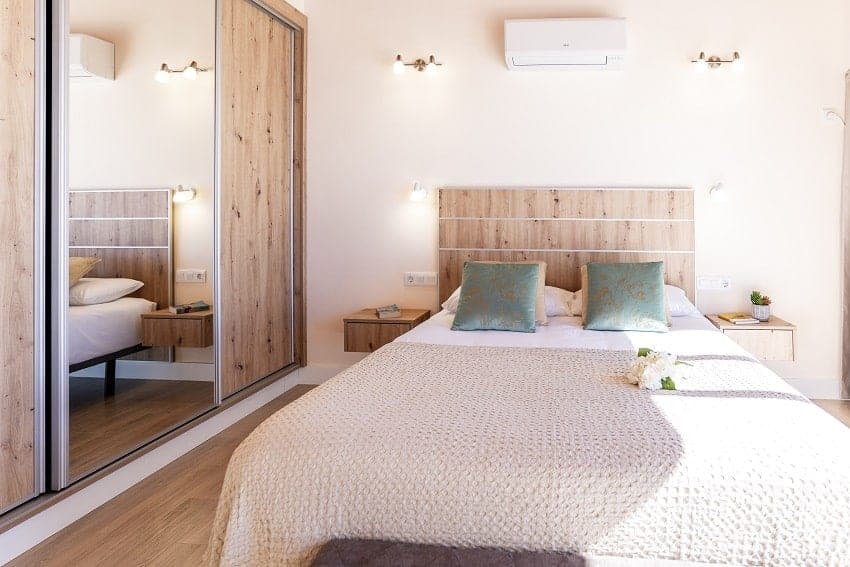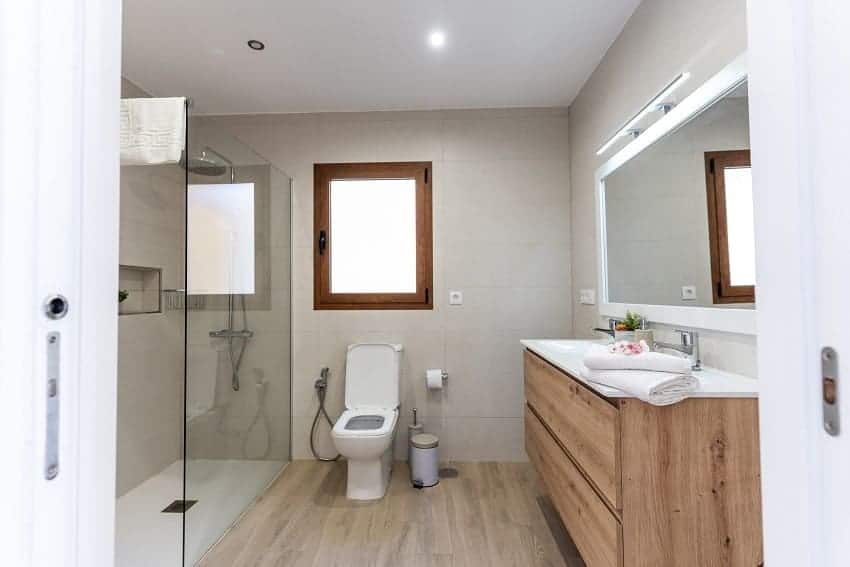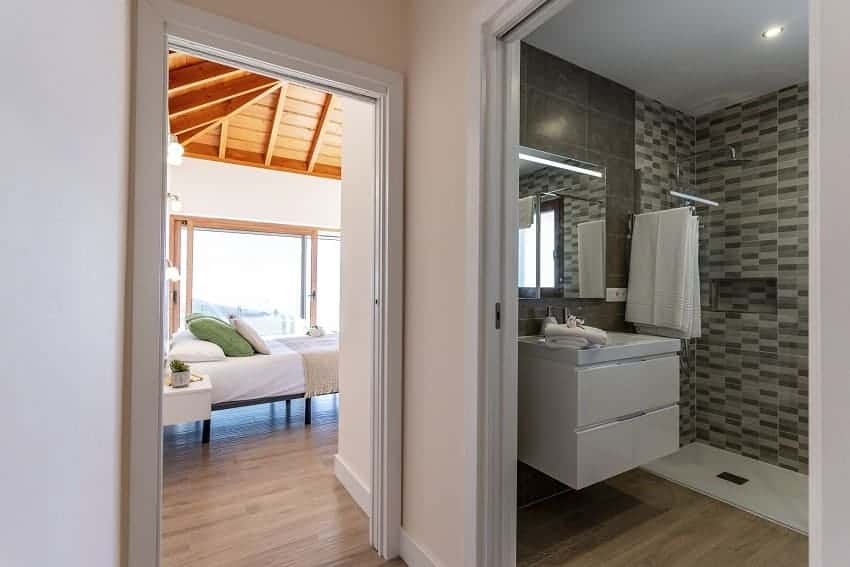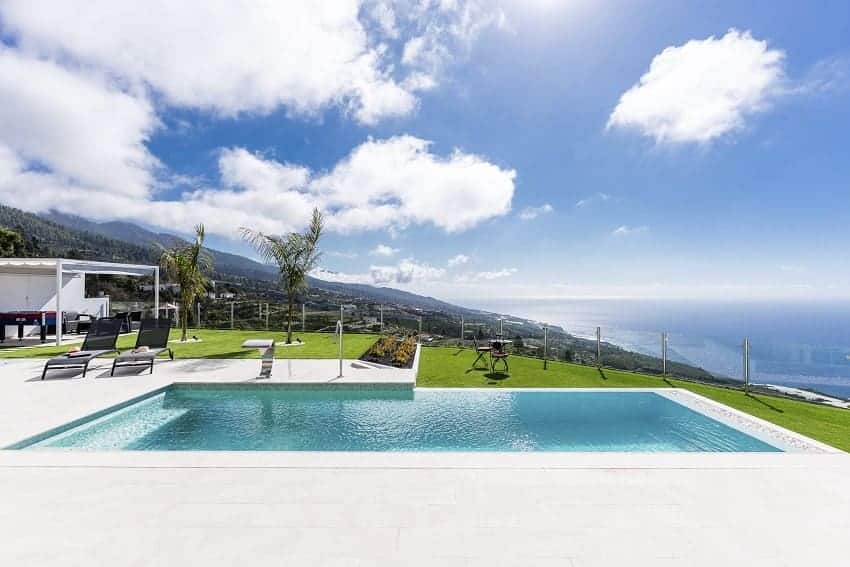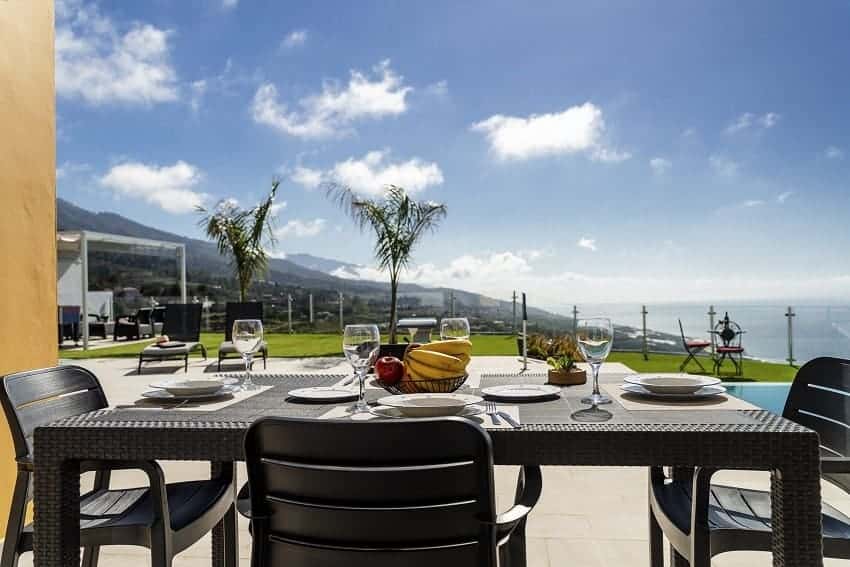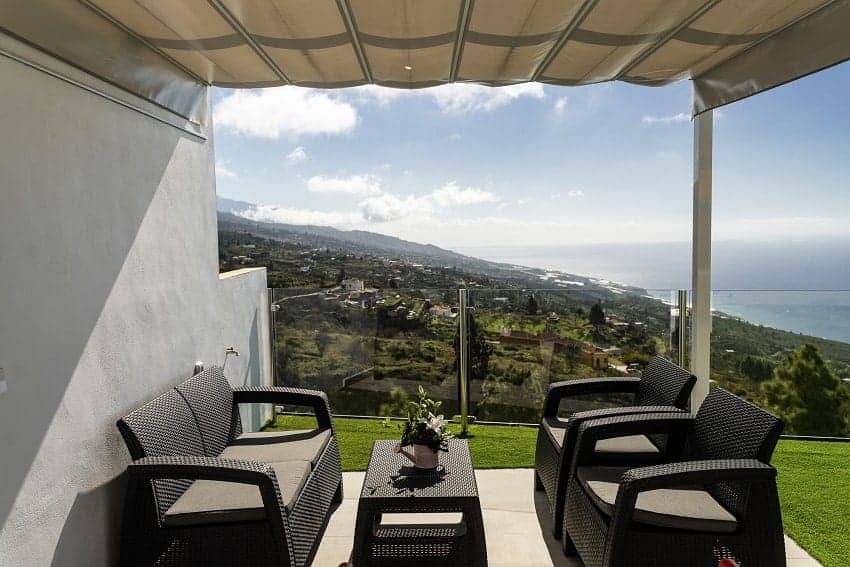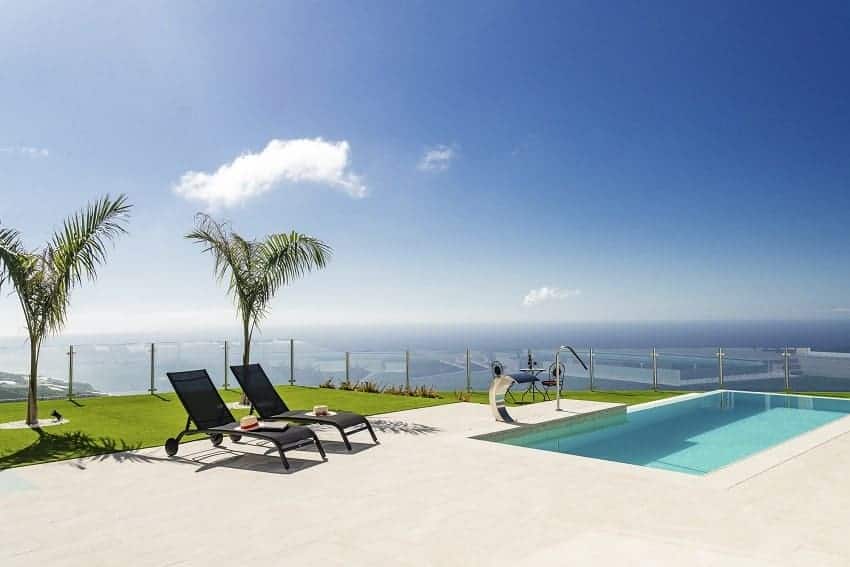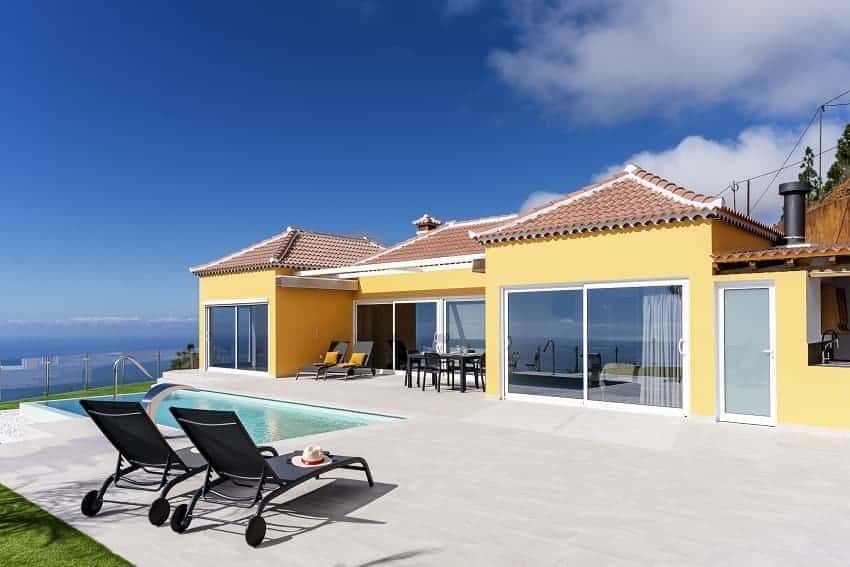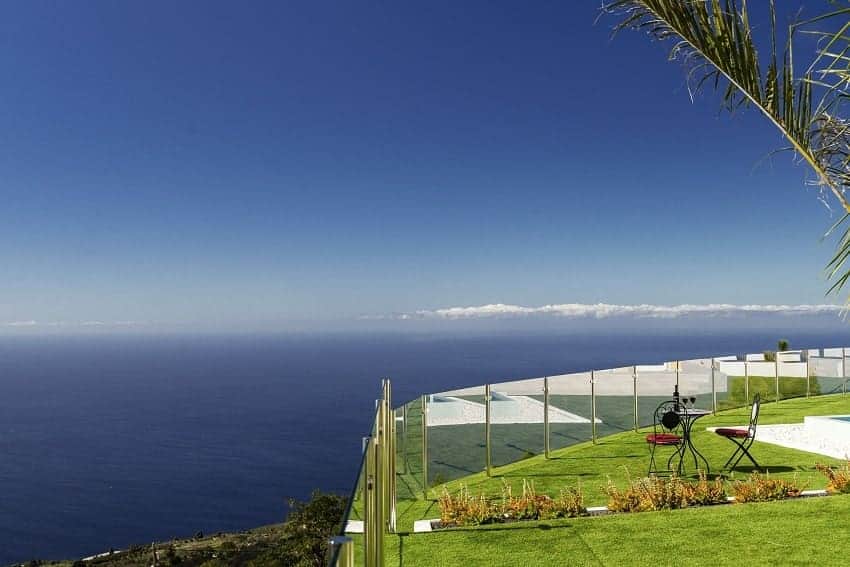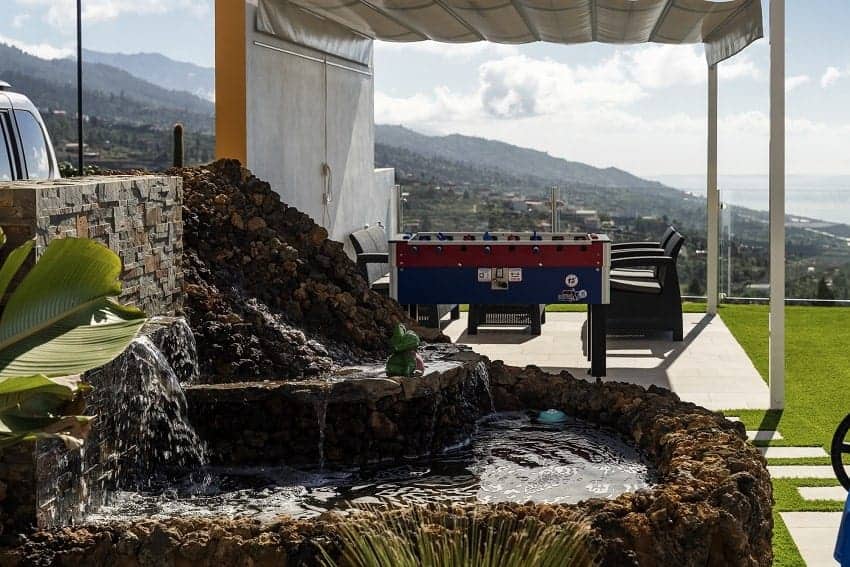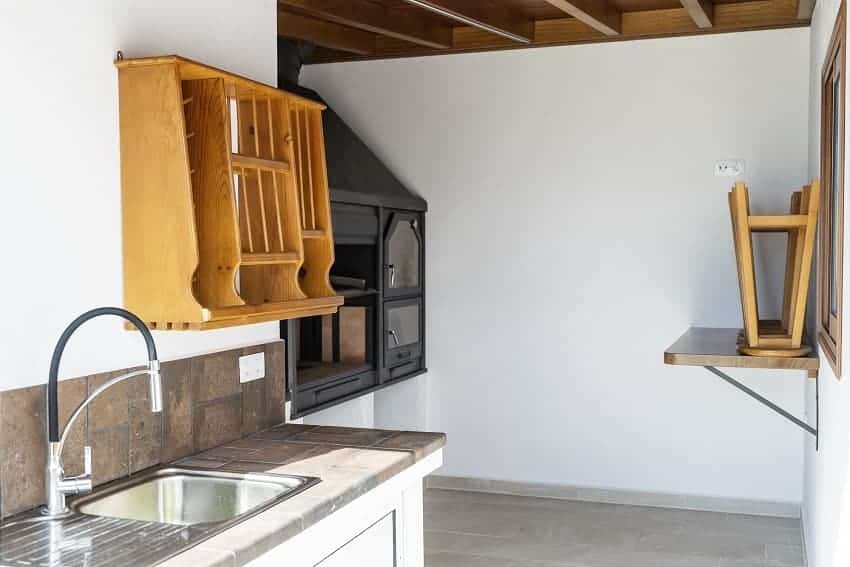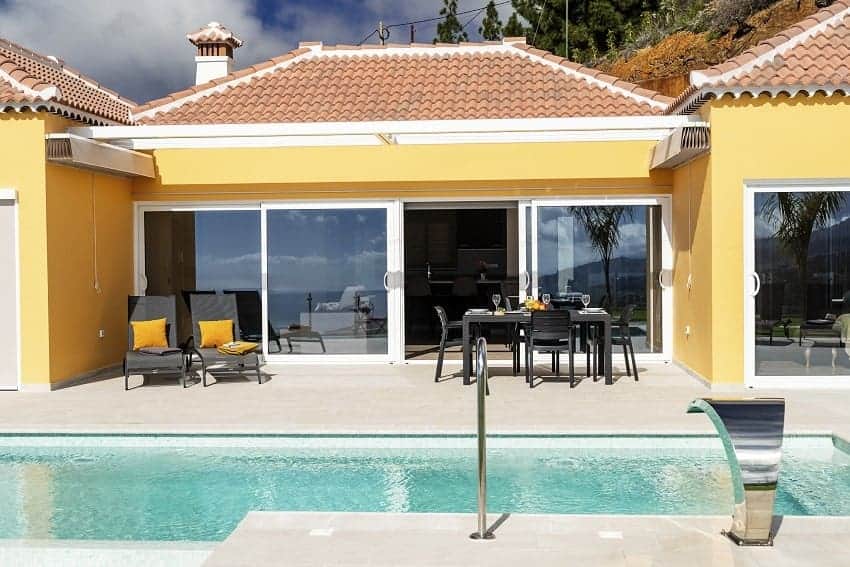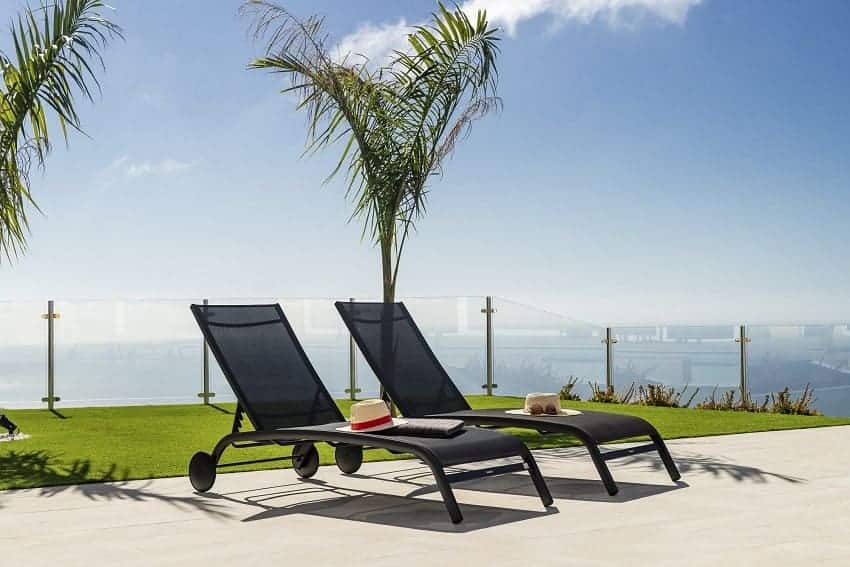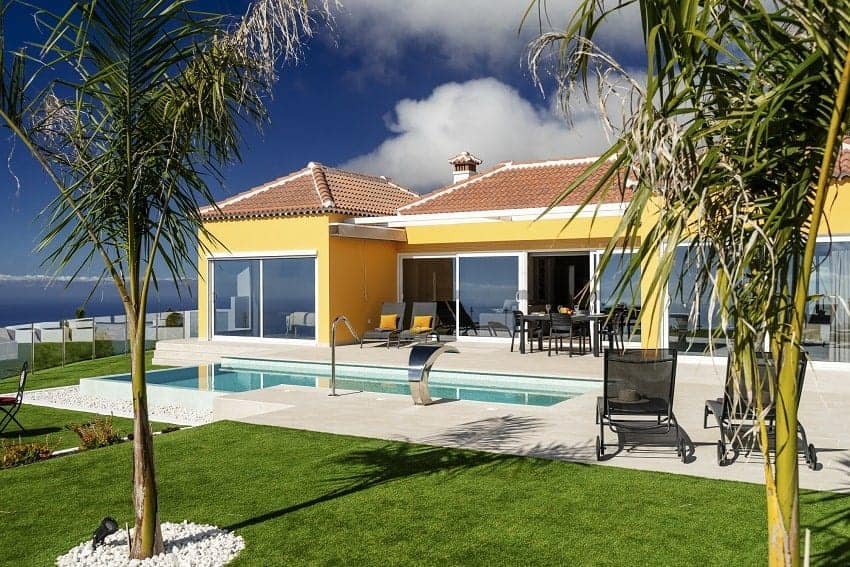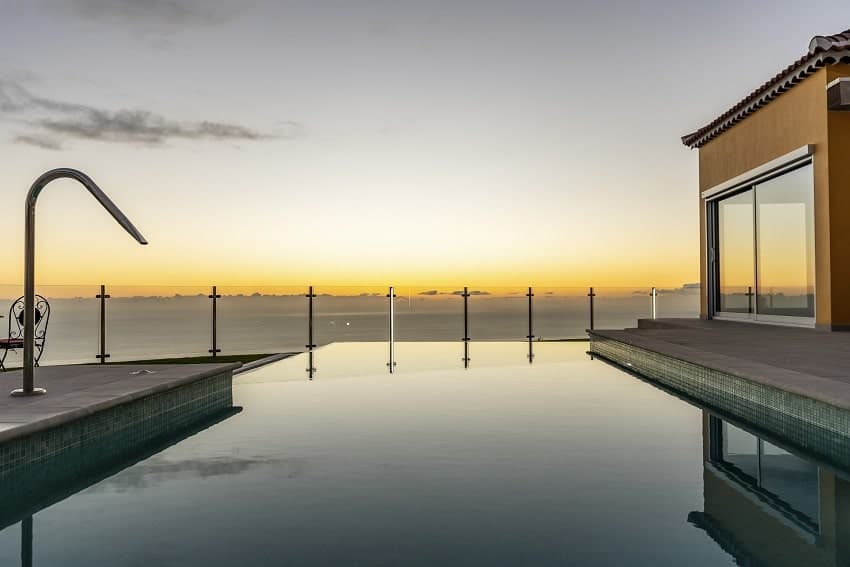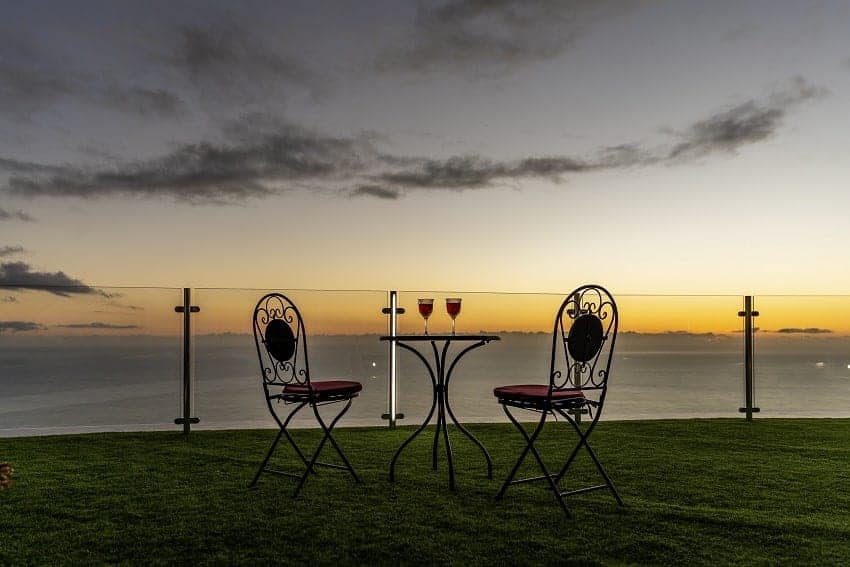Availability
Villa Marajá
 1
1  2 2
2 2 







This newly built villa is ideal for your La Palma holidays and offers a heated infinity pool, state-of-the-art equipment and an unforgettable view over the sea and west coast all the way to the Aridane valley.
For unforgettable holidays on La Palma, Villa Marajá offers the perfect combination of modern comforts, luxurious amenities and breathtaking views.
By means of a paved driveway, you reach your holiday destination – the Villa Marajá. Once inside, an open living area awaits you with a cosy sofa, pellet stove, dining table and kitchen. In addition to a dishwasher and oven, the kitchen also has indirect lighting and a kitchen counter – making cooking a relaxed affair.
Each of the two cosy bedrooms has its own private bathroom and offers a breathtaking view of the Atlantic Ocean. Furthermore, there is air conditioning and state-of-the-art blackout technology for the perfect sleeping conditions.
The outdoor area can be accessed through the large glass doors, which flood the house with light. In addition to the pool with jet massage and counter-current system, there are sun loungers and a covered lounge area with foosball table and a barbecue area. The terrace with dining table is a wonderful place to dine – with a view of the Atlantic Ocean. For variety, there is a boccia court.
Finally, the solar panels supply the villa with electricity, completing its modern amenities.
Planning a family getaway? Discover our detailed guide to family-friendly activities and attractions on La Palma.
Facilities
- 1 Outdoor Shower
- 2 Bathrooms
- 2 Double Bedrooms
- Air Condition Cold / Warm
- Baby Cot
- Barbecue
- Bed Linen & Towels are Provided
- Chill-Out Area
- Chimney
- Coffee Maker
- Covered Terrace
- Dishwasher
- Electric Kettle
- Fridge / Freezer
- Garden
- Hair Dryer
- High Chair
- Internet - WiFi
- Iron
- Ironing Board
- Living Room with Kitchen and Dining Room
- Microwave
- Outdoor Furniture
- Oven
- Parking Space
- Pool Electrically Heated (extra charge)
- Private Swimming Pool
- Safe
- Shower
- Sofa
- Stove
- Sunbeds
- Terrace
- Toaster
- Washing Machine
Internet
Location and Distances
Medical help
Check In / Check Out
Payment / Cancellation
Additional information
Accommodation review scores and score breakdown
Based on 2 reviews
Guest reviews are written by customers after their stay at Villa Marajá.
Guest reviews
-
23.07.2025
Anfangs skeptisch, dann restlos begeistert! Ein Traumhaus mit atemberaubender Aussicht. Wir waren anfangs etwas unsicher bei der Buchung, da die Bilder fast zu perfekt aussahen – aber wir wurden absolut positiv überrascht und unsere Erwartungen wurden bei Weitem übertroffen! Das Haus ist einfach fantastisch. Es ist nicht nur wunderschön eingerichtet und makellos sauber, sondern bietet auch alle Annehmlichkeiten, die man sich wünschen kann. Der Außenbereich mit dem Pool und der perfekt gepflegten Außenfläche ist eine Oase der Ruhe und Entspannung. Das absolute Highlight ist jedoch die unglaubliche Aussicht auf das Meer. Jeden Morgen beim Aufwachen und jeden Abend beim Sonnenuntergang wurden wir von diesem Panorama verzaubert. Es ist einfach unbeschreiblich, diesen Blick direkt vom Pool oder der Terrasse aus zu genießen. Die Lage ist ideal für alle, die Ruhe und Erholung suchen, aber dennoch gute Anbindungen zu Ausflügen wünschen. Die Betreuung durch Belinda und das gesamte Team, vom Anfang der Buchung bis zur Abreise war sehr gut und wir sind bestimmt keine einfachen Kunden. Alles in allem war unser Aufenthalt ein unvergessliches Erlebnis. Wir können dieses Haus und die CanaryCompany mit Hannes und Franzi uneingeschränkt empfehlen und würden jederzeit gerne wiederkommen!
-
12.02.2023
Tolle Lage. Super Einrichtung. Nagelneu.
La Palma
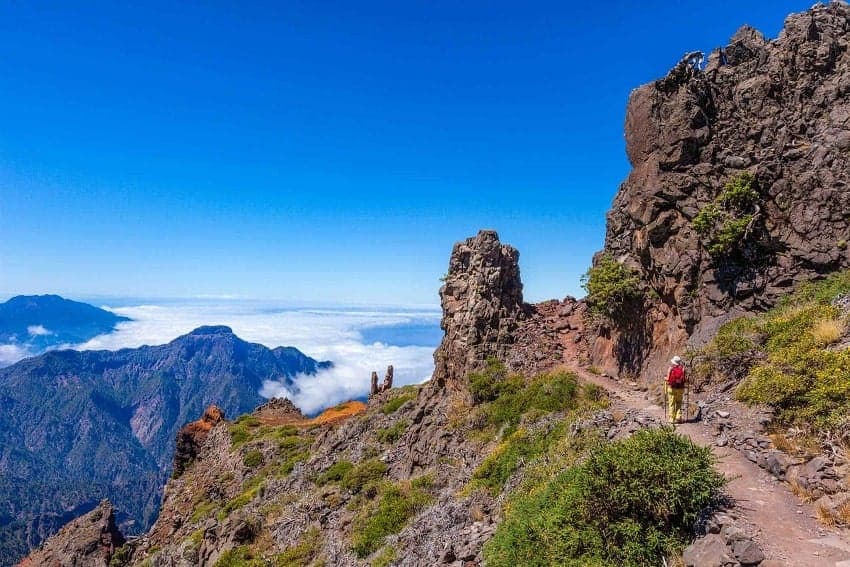
The island of La Palma offers breathtaking landscapes, remote beaches, imposing volcanoes, dense forests and incomparably starry skies.
With its 708 square kilometres, an elevation of 2.426m and its shape of a heart it is the most Western island of the Canary Island chain. Like every island in this archipelago, La Palma was created by volcanic activity. It is one of the youngest of the seven islands, dating back some 1.7 million years. The volcanic origin of La Palma is still clearly recognizable today, especially the southern part of the island with the dormant volcano Teneguía which last erupted in 1971, and offers interesting insights into its geological past.
The year-round mild climate with average temperatures between 18 and 27 degrees Celsius produce spring-summerlike weather as a result of the northeast trade winds.
This weather phenomenon is responsible for a pleasant subtropical climate and a rich green vegetation that prevails because of the humidity carried along in the trade winds. These moisture rich winds at certain times of the year also create a spectacular waterfall of clouds cascading down the central mountain faces and hence the nicknames Isla Verde – Green Island and Isla Bonita – Beautiful Island.
The unique geological structure of the island with its variety of vegetation zones and microclimates that are rarely found in the world on such a small area make this island a miniature universe. Each area of the island varies completely from another. In 1983 La Palma was declared a UNESCO biosphere reserve.
Another special feature of La Palma is the unique night sky. Due to its location in the Atlantic Ocean, sparse population, minimum light pollution and highest mountain peak Roque de los Muchachos 2.426m, the island was chosen as the location for one of the largest and modern observatories in the world.
The official population of the island is approximately 80,000 people. Traditional festivals such as the Bajada de la Virgen or Los Indianos carnival, famous far beyond the island’s borders, bear witness to the zest for life of the local people (Palmeros). Not only the geographical location, but also the numerous immigrants from Central and South America show a variety of Hispanic influences in island life, cuisine and cultural.
Read more...

